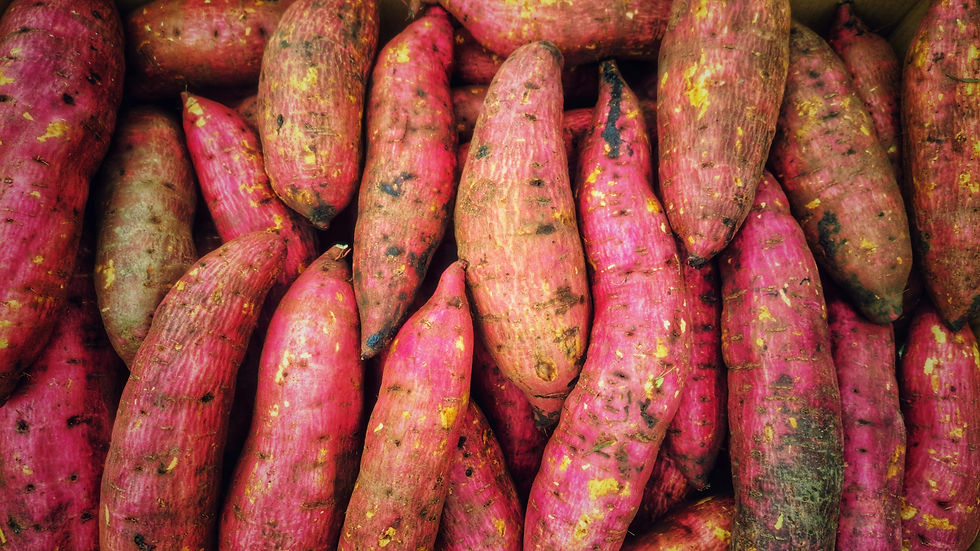Cauliflower Power
- Chef Kelly Unger
- Nov 2, 2022
- 2 min read
Cauliflower is in the Brassica botanical family along with cabbages, broccoli and brussel sprouts. It comes in many colors beyond the beautiful white we are accustomed to seeing. There are yellow varieties, generally referred to as cheddar, purple varieties in varying shades, sometimes referred to as pink, and green varieties. Interesting probably only to me are the terms used to describe parts of the cauliflower. Chefs refer to smaller individual pieces or sections of the cauliflower as fleurettes and farmers refer to them as curds.
The leaves are edible too, so when you get them attached at the farmers market, don’t throw those away. Steam or saute them to enjoy them. Cauliflower is high in fiber, B vitamins, antioxidants and phytonutrients. It’s high in water content, which is great for keeping you hydrated when eaten raw or steamed, but when you want to roast cauliflower to bring out its sweetness, it takes a while.
When I roast cauliflower I find it better to separate the head into small fleurettes and I do sprinkle them very lightly with a little sugar if the particular variety I am using is on the bitter side. I can tell that by tasting it raw. If it’s already a little bitter when raw, it’s going to need a little sugar.
This week I’m sharing a link to
This collection has some standouts recipes like: Kung Pao Cauliflower, Cauliflower Steaks, Asian Pear Salad with Peanut Lime Dressing, Roasted Cauliflower Larb, Giardiniera Antipasto Platter, and Roasted Aloo Gobi (Potatoes and Cauliflower). I think this collection really demonstrated the versatility of cauliflower. It adapts well to many different flavor profiles from cuisines around the world. I also really liked the Cauliflower Taco recipe. That’s a super easy one to make. Even if you’re a meat eater like me, I like having vegetable main dishes. Enjoy!




Comments